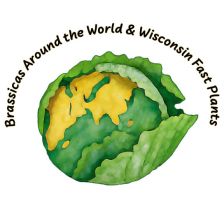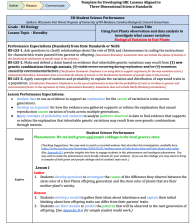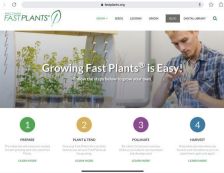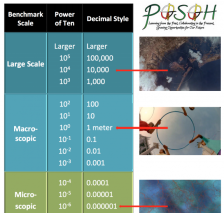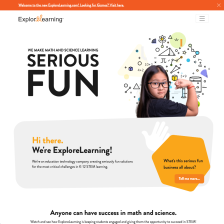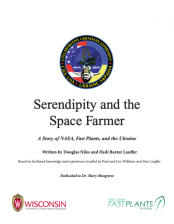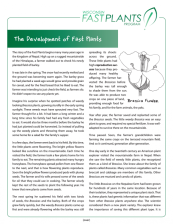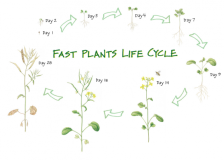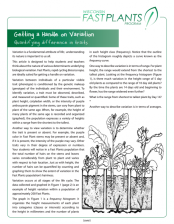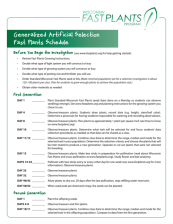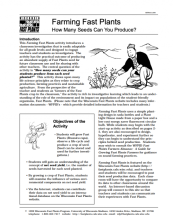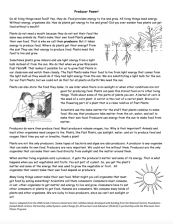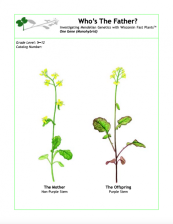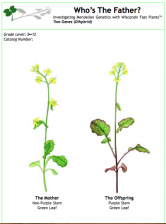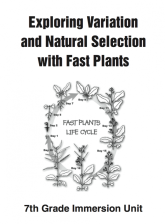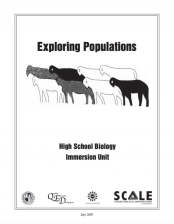Browse Resources
(10 classifications) (18 resources)
| Activity
(13)
Experiment/Lab Activity (26) Instructor Guide/Manual (20) Interactive Simulation (2) Lesson/Lesson Plan (17) |
Model
(2)
Project (3) Simulation (2) Student Guide (1) Unit of Instruction (14) |
Resources | |
|---|---|
This investigation begins with a phenomenon that is evidenced in most every produce aisle: Many of the vegetables that botanists classify as Brassica look and taste different. This investigation aligns with middle and high school Next Generation Science Standards as well as with agricultural science...
In this 26-page investigation—co-developed for secondary grades by teachers, the Wisconsin Fast Plants Program at UW-Madison, The Concord Consortium data scientists, and developers from Carolina Biological Supply, and Brett Moulding—learners investigate variation and inheritance in the “three...
This lesson plan, from the University of Wisconsin-Madisons Wisconsin Fast Plants, is for a high school biology investigation into evolution and artificial selection while using Fast Plants polycot seeds. The lesson plan describes student science performance for in-classroom learning as well as...
Part of the Fast Plants website, the "Grow" section offers complete instructions for preparing to grow, planting, tending, pollinating, and harvesting Wisconsin Fast Plants seeds. Instructions include text descriptions, photos, videos, and PDF instructions that can be downloaded, including a...
This is a printable poster resource developed by a collaboration of educators in the POSOH Project for teaching about systems and scale. This poster correlates with an excerpt from the video Cosmic Voyage about systems and scale, narrated by Morgan Freeman. A debrief discussion of that video excerpt...
Sign up for a free account on the Gizmo website (https://www.explorelearning.com/index.cfm?method=Controller.dspFreeAccount) for free access to two simulations that were collaboratively developed by the teams at Explore Learning and the Wisconsin Fast Plants Program of the University of...
Who knew that rocket science could have so much in common with botany and plant pathology? This is a human interest and science story that documents from firsthand accounts and artifacts the historical context and scientific events relevant to an important collaborative Fast Plant investigation on...
This is "The Story of Fast Plants" - a short story of the origins of Brassicas and the work of Dr. Paul Williams, developing Brassica rapa. Reading level ~7th grade.
This is a jpg version of the Wisconsin Fast Plants life cycle that is found on our website. These Fast Plant illustrations were drawn by Alison Schroeer.
This article is designed to help students and teachers think about the nature of various determinants underlying biological variation. Teachers facilitating any selection investigation will find this background information helpful, including those planning for the AP Biology Lab 1 of Big Idea 1:...
This fill-in-the-blank timeline is a planning tool for teachers to use when figuring out when to begin the steps associated with conducting a two-generation artificial selection experiment using Fast Plants. Teachers preparing for any selection experiment will find this timeline helpful, including...
This Farming Fast Plants activity introduces a classroom investigation that is easily adaptable for all grade levels and designed to engage teachers and students as investigators. The activity has the practical outcome of producing an abundant supply of Fast Plants seed for future classroom use and...
Turnips, Chinese cabbage and Wisconsin Fast Plants (Rbr) look very different. Yet, they actually belong to the same species. This means that they have the same number of chromosomes and they can cross breed and produce fertile offspring. But how can you prove that plants that look so different are...
An article written for children, this reading explains the role of plants as producers. It is written at a grade 4-5 reading level, and it is a good supplement to the evidence that students can observe and record through experimentation with photosynthesis.
In this investigation, students will gather their own evidence to explain how inheritance works. As they observe three generations of Wisconsin Fast Plants, students will unravel a mystery of paternity: What is the father’s phenotype? Is it the same as the mother’s phenotype or the offspring’s...
Download the complete instructions for a high school level inheritance and genetics inquiry, using Wisconsin Fast Plants. In this investigation, students gather their own evidence to explain how inheritance works. As they observe three generations of Wisconsin Fast Plants, students unravel a...
Download this complete and coherently designed, middle school level unit to teach fundamental concepts that underpin the theory of evolution. The unit was collaboratively designed by teachers, college faculty & staff, and the Fast Plants Program at UW-Madison to support student-centered...
This Immersion Unit provides a coherent series of lessons designed to guide students in developing deep conceptual understanding that is aligned with the standards, key science concepts, and essential features of classroom inquiry (as defined by the National Science Education Standards).
Unit...
| |
